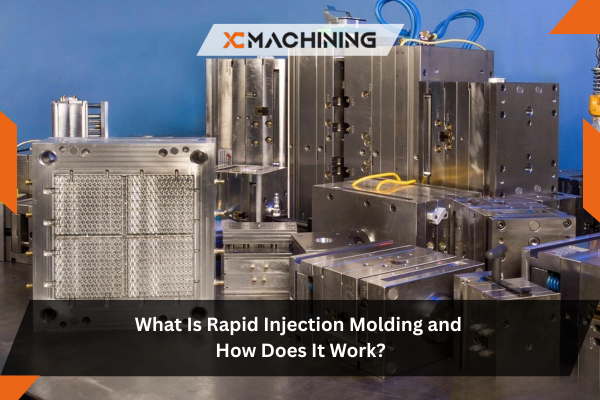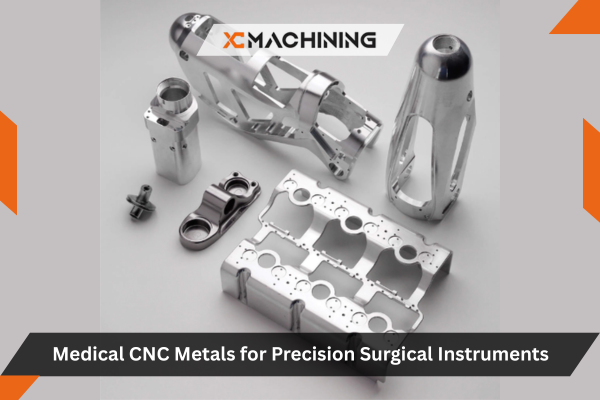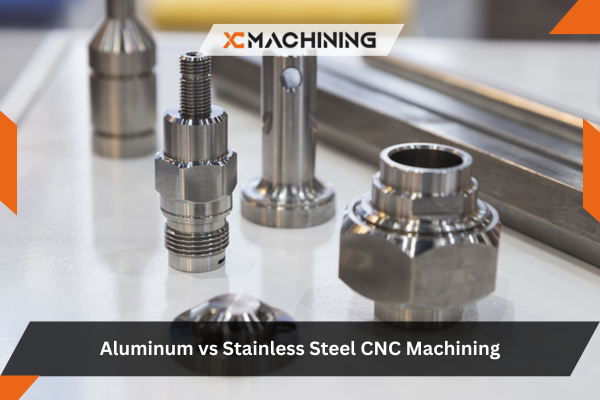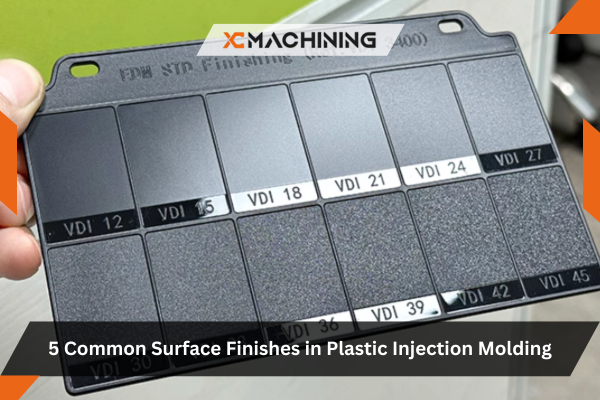Have you ever felt frustrated by how long it takes to get plastic parts ready for testing or limited production? Perhaps you’ve considered injection molding but assumed the typical process would drag on for months. If so, you’re not alone. Many designers and manufacturers face tight timelines and need a faster route to molded components.
Essentially, Rapid Injection Molding shrinks mold creation times by using simpler tooling and quick cures to produce molds quickly. It:
- Reduces lead times dramatically.
- Uses aluminum or modified steel dies.
- Delivers functional plastic parts in days.
- Offers a cheaper route than full-scale production.
You skip mold manufacturing steps and get injection-molded parts.
For the rest of this article, we’ll delve into the major benefits and limitations of Rapid Injection Molding, explore how it differs from standard injection molding, and discuss ideal use cases. You’ll also learn about design tips, material choices, and the typical timelines involved for molded parts and potential costs.
RAPID INJECTION MOLDING: QUICK AND EFFICIENT
Rapid Injection Molding transforms the usual mold-making timeline by employing easy-to-machine materials like aluminum or simplified steel. By bypassing extensive polishing or ultra-robust construction, the process produces serviceable molds in a fraction of the normal time. That means molded parts can arrive swiftly, aiding anyone who needs real plastic samples fast.
Speedy Setup
Shorter mold fabrication compresses project schedules. You can trial a design, see real-world performance, and adjust without massive delays. This approach suits prototypes or moderate-volume runs perfectly.
Lower Costs
Aluminum tooling or reduced mold complexity slashes upfront expenses. That cost reduction benefits startups, R&D teams, or anyone aiming to confirm product viability before heavy investment.
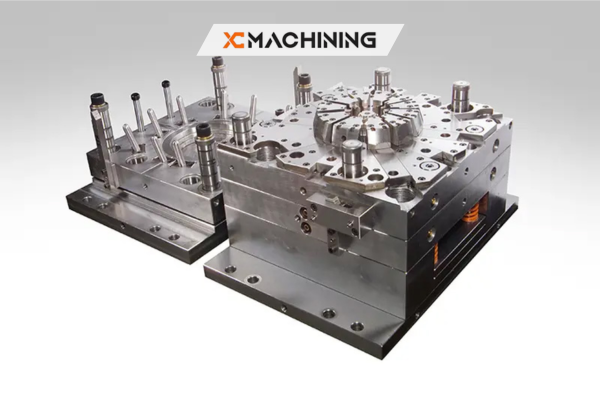
Real Production-Grade Parts
Unlike 3D printing, these molded pieces use typical injection-grade resins, matching the look and strength of end-use products. So, your tests yield meaningful insights on performance and durability.
Understanding The Rapid Injection Molding Concept
Rapid Injection Molding essentially shrinks the usual mold-making timeline by using easily machined aluminum blocks or modified steel. Instead of painstakingly milling a full production mold, shops create a simpler design that holds up for lower-volume runs. This means prototypes or short batches can be made in days, not weeks.
Additionally, tooling shops might rely on 3D-printed mold inserts for smaller sections, speeding up the initial phase. This approach keeps mold accuracy high enough for test parts or interim production. If changes arise, you can revise the digital file and produce new inserts without completely tossing the entire mold base.
How It Differs From Traditional Molding
In standard injection molding, molds are built to withstand millions of cycles. They use hardened steel, complex cooling lines, and extensive polishing. Rapid Injection Molding scales back these requirements, focusing on quicker fabrication instead. Although the resulting mold won’t last forever, it excels at producing functional parts in smaller quantities.
In conventional injection molding, you wait weeks or months for hardened steel molds. With Rapid Injection Molding, that waiting shrinks drastically, letting you verify part geometry completely sooner. This difference also changes how you approach design updates—since quick mold alterations are more feasible, you gain flexibility in finalizing product features.
Core Benefits Of Rapid Injection Molding
Faster turnaround is the main draw. When time is tight, you can get plastic components without resorting to 3D printing. You reduce upfront costs since aluminum tooling is cheaper to craft. Plus, if you spot design flaws, it’s less to adjust or scrap a mold than a pricey steel one.
Faster molds also mean you can produce multiple iterations cheaply. If your first run reveals flaws, adjust the CAD and have a new mold cut. Traditional molds could cost tens of thousands to tweak. In contrast, Rapid Injection Molding encourages iterative development, leading to better final products in fewer cycles.
Speedy Mold Fabrication Explained
Typically, shops use CNC machining or even 3D-printed inserts to form the mold cavity. Because everything’s simplified, the entire process might take just a few days. Cutting corners? Not exactly. They still ensure critical dimensions match your part. They just skip certain durability steps that a long-running mold would need.
By skipping custom cooling lines or advanced surface treatments, mold creation moves faster. Machinists can run a simpler CNC program on aluminum blocks, generating the core and cavity swiftly. That said, advanced geometries might demand partial hand-finishing. Still, the overall approach remains more straightforward than building an optimized steel mold.
Materials Commonly Used
Rapid Injection Molding usually employs aluminum for the mold base, thanks to its easy machinability. For the actual plastic, you can pick from resins like ABS, polypropylene, or nylon. Some shops handle high-temp materials, but the mold’s lifespan may shorten. The key is matching material properties to your product needs.
Selecting the right plastic for your part can be the difference between success and failure. If you need high-impact resistance, consider ABS or polycarbonate. If chemical resistance is key, try polypropylene or nylon. Work closely with your rapid molding service to confirm their stock materials match your performance and color needs.
Cost Advantages
By skipping the hardened steel approach and lengthy polishing, Rapid Injection Molding drastically cuts mold fabrication costs. For runs of a few hundred to a few thousand units, it’s often cheaper than a full production mold. That can be a lifesaver if you’re validating a design before huge mass production.
Naturally, smaller mold investments yield faster payback. If you only require 500 pieces, spending tens of thousands on a hardened mold makes little sense. Rapid Injection Molding fits that sweet spot: you pay less, get parts sooner, and hold your budget for future iterations or design improvements down the line.
Cycle Times And Production Rates
Once the mold is ready, cycle times mirror standard injection molding. Each part might take seconds to minutes, depending on complexity. Because the mold isn’t designed for ultra-high volumes, you won’t crank out millions of parts. However, for moderate batches, the speed still surpasses many alternate methods, including 3D printing.
Even though cycle times remain similar, each shot can replicate your design precisely. That consistency is suitable for pilot production or short-run. Once you finalize part geometry, the next step might be ramping up with a conventional mold if volumes explode. Until then, the rapid approach keeps your pipeline flexible.
Design Considerations
When using Rapid Injection Molding, keep certain design rules in mind. Deep undercuts or complicated geometry might require inserts or special side actions, which add complexity. Consider gating and part ejection. Simpler designs reduce mold costs and lead times. If you need advanced features, confirm your vendor can handle them.
Engineers typically design with draft angles, part ejection points, and gating in mind. Rapid Injection Molding doesn’t skip these fundamentals. Instead, it compresses the mold fabrication timeline. Be sure your CAD files incorporate essential injection molding features—like fillets at corners—so your mold can form your part without cracks or misalignments.
Prototyping Vs. Production
Most people see Rapid Injection Molding as a prototyping solution, but it can handle limited production runs. If your annual volumes stay within a few thousand units, aluminum molds might suffice for products. You can refine your design with these quick runs and then scale to a hardened steel mold later.
Although short-run production is common, some projects stick with aluminum tooling for the entire product lifecycle if volumes never exceed a certain threshold. You might see this in niche medical or aerospace parts. By forgoing a high-volume steel mold, you free significant capital for other improvements or additional product variants.
Quality And Tolerances
Rapid Injection Molding can achieve tolerances close to traditional methods, though not every vendor promises the same precision. Aluminum molds, while good, can deform under high pressure if you push them too hard. If you require ultra-tight tolerances, confirm that your chosen provider has the expertise to maintain part dimensions.
For tight tolerances, check if your vendor employs strategies like steel inserts or extra mold support. Overly high injection pressures can distort an aluminum tool. However, many providers have proven methods to maintain accuracy. As long as you communicate your specs upfront, Rapid Injection Molding can handle surprisingly precise features.
Lead Times And Typical Delivery
Depending on complexity, you might see a finished mold in under a week. Once that’s done, cranking out parts can happen as fast as normal injection molding. So overall project timelines compress. If your design changes midstream, it’s easier to tweak or remake an aluminum mold than a hardened one.
If you need parts ASAP, you can expedite the mold build, sometimes paying a premium for their weekend machine time. Once running, each shot is as quick as standard injection processes, so part output remains entirely efficient. That condensed schedule helps you confirm fit, function, and aesthetics without waiting months.
Cost Range And ROI
Pricing can vary widely. A simple mold might cost a few thousand dollars, whereas complex multi-cavity tools go higher. Still, Rapid Injection Molding remains cheaper than standard steel tooling. If your production run is short or you’re still testing designs, the ROI can be huge, saving both time and money.
Depending on your mold complexity, costs can climb. Multi-cavity or multi-action molds aren’t always as fast to produce, even in aluminum. If you require gating or in-mold features, lead times may stretch. Still, these timelines often beat hardened steel molds, which can drag on for months in normal settings.
Comparing With 3D Printing
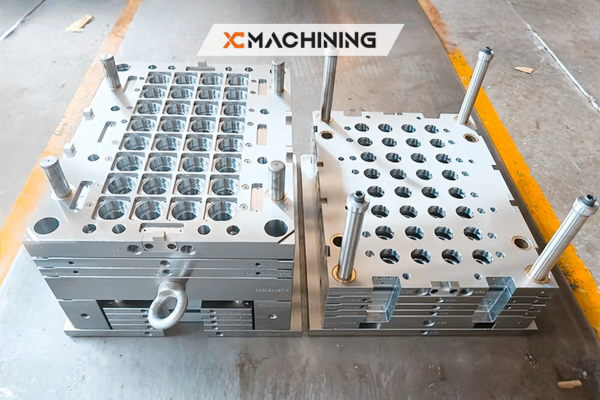
3D printing can create prototypes without a mold, but each part may take hours, and mechanical properties might not match injection-molded plastics. Rapid Injection Molding fills that gap by offering injection-quality pieces quickly. If you need ten or more functional units, RIM often outperforms 3D prints in cost per part.
While 3D printing excels at single-part creation, Rapid Injection Molding gives you real injection-molded texture, strength, and finish. That advantage matters if you plan to test real-world conditions or get user feedback on production-like parts. If your piece needs assembly with other components, injection-grade tolerances significantly outperform typical 3D prints.
Potential Drawbacks And Limitations
Though faster than traditional routes, Rapid Injection Molding still involves making a mold, so it’s not instantaneous. The aluminum tool might not support hundreds of thousands of cycles, limiting huge production runs. Complex geometries requiring gating or side actions could raise costs or elongate lead times, lessening the speed benefit.
Because aluminum’s not as robust as steel, you can’t pump out infinite parts. If your product becomes popular, you might outgrow the mold’s lifespan. In that scenario, shifting to a standard injection mold is logical. The key is using Rapid Injection Molding to validate your design before mass demand hits.
Table: Rapid Injection Molding At A Glance
Below is a quick reference table summarizing key factors around Rapid Injection Molding. It highlights lead times, cost ranges, mold materials, and typical batch sizes, offering an at-a-glance comparison. Use it to gauge whether RIM suits your next project, especially if you’re weighing it against 3D printing or standard molds.
| Factor | Typical Range |
|---|---|
| Lead Time | 1-3 weeks |
| Cost Range | $3k-$20k+ |
| Mold Material | Aluminum or mild steel |
| Ideal Volume | 100-10,000 parts |
| Common Resins | ABS, Nylon, PP, etc. |
Ultimately, adopting Rapid Injection Molding can transform your product launch cycle. You move from concept to real parts fast, test them in real scenarios, and pivot as needed. This approach preserves capital, shortens development, and keeps you nimble. Once you see real-world success, scaling up is far simpler and less risky.
CONCLUSION
In summary, Rapid Injection Molding offers a truly swift route from concept to molded plastic parts. By using simpler tooling and focusing on moderate volumes, it bridges the gap between prototyping and large-scale production. If your priority is speed, design flexibility, and lower initial investment, this approach may be what you need.
FAQs
Why choose Rapid Injection Molding over 3D printing for prototypes?
Many prototypes require real injection-grade materials and surface finishes. While 3D printing is fine for checks, RIM provides robust parts for functional testing. It scales better if you need dozens or hundreds of samples, bridging the gap to full production.
What’s the typical mold lifespan?
Aluminum molds in Rapid Injection Molding might last 5,000 to 10,000 shots, sometimes more if maintained well. That’s lower than steel molds built for millions of cycles. However, for prototyping or moderate-volume needs, this range suffices, and you can remake molds if demand spikes later.
Does Rapid Injection Molding compromise part quality?
Generally, no, as parts can be made from standard resins and mirror normal injection standards. The mold material and design matter, though. If your mold is carefully machined and you follow typical injection parameters, you’ll get near-identical results compared to full-scale molded parts.

